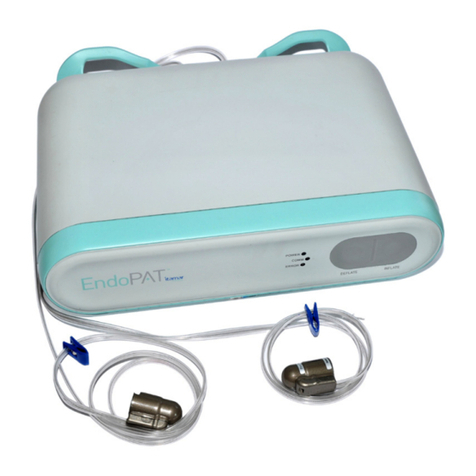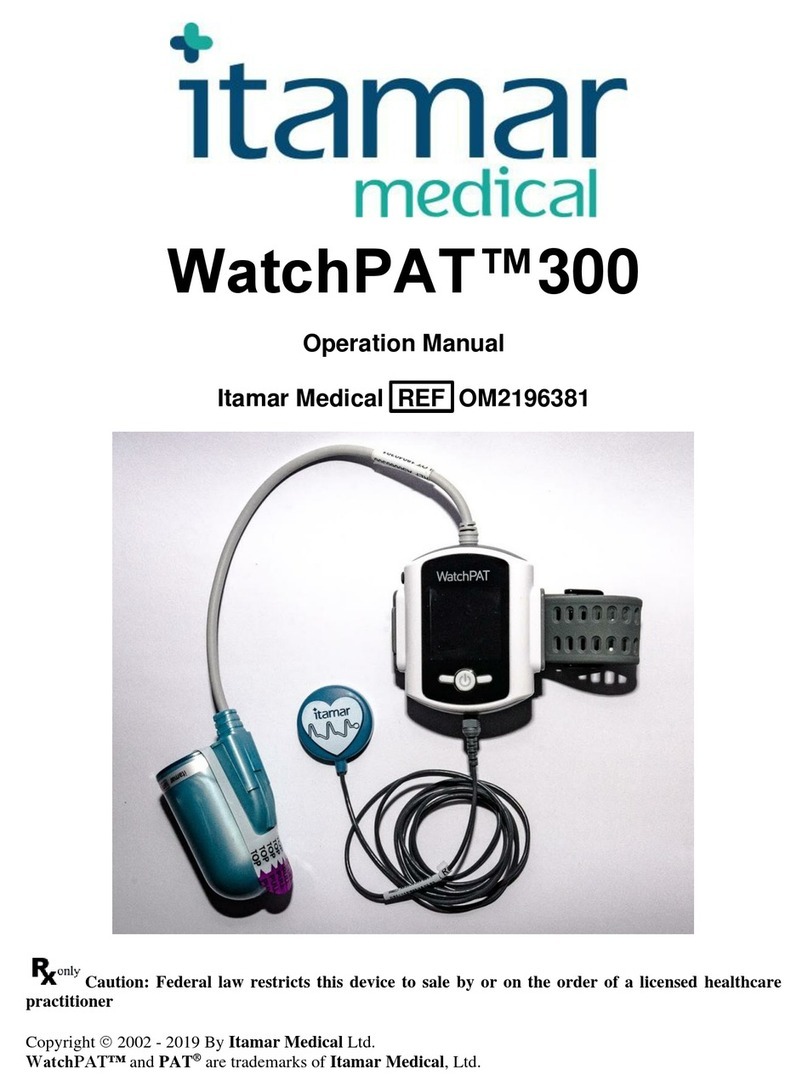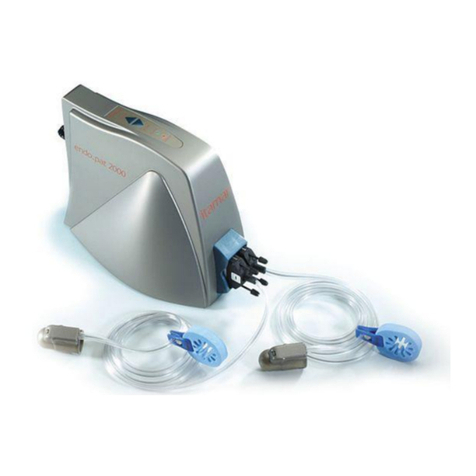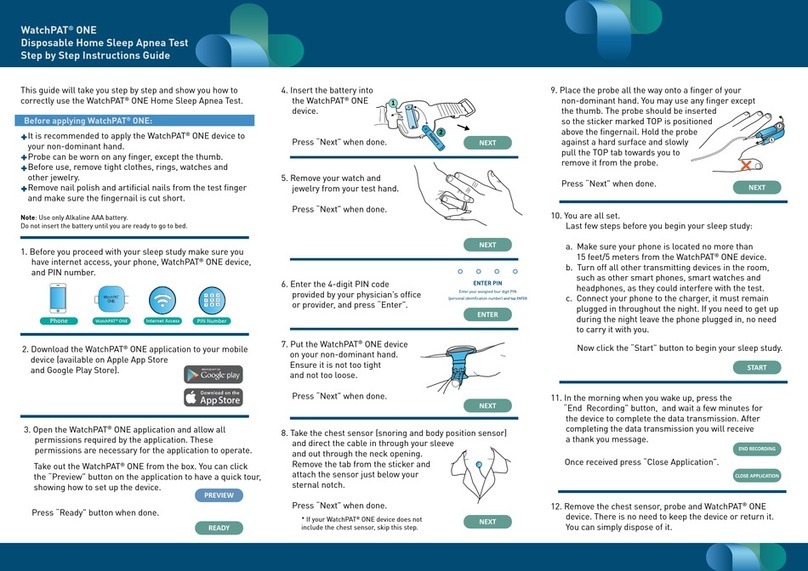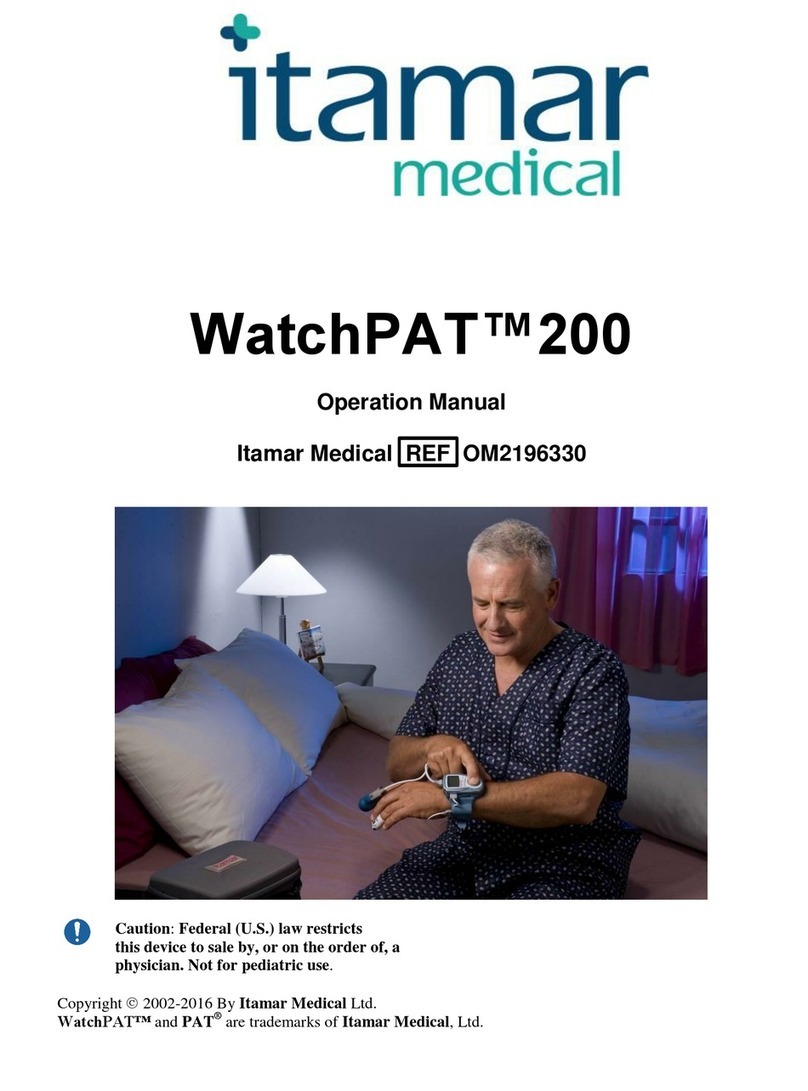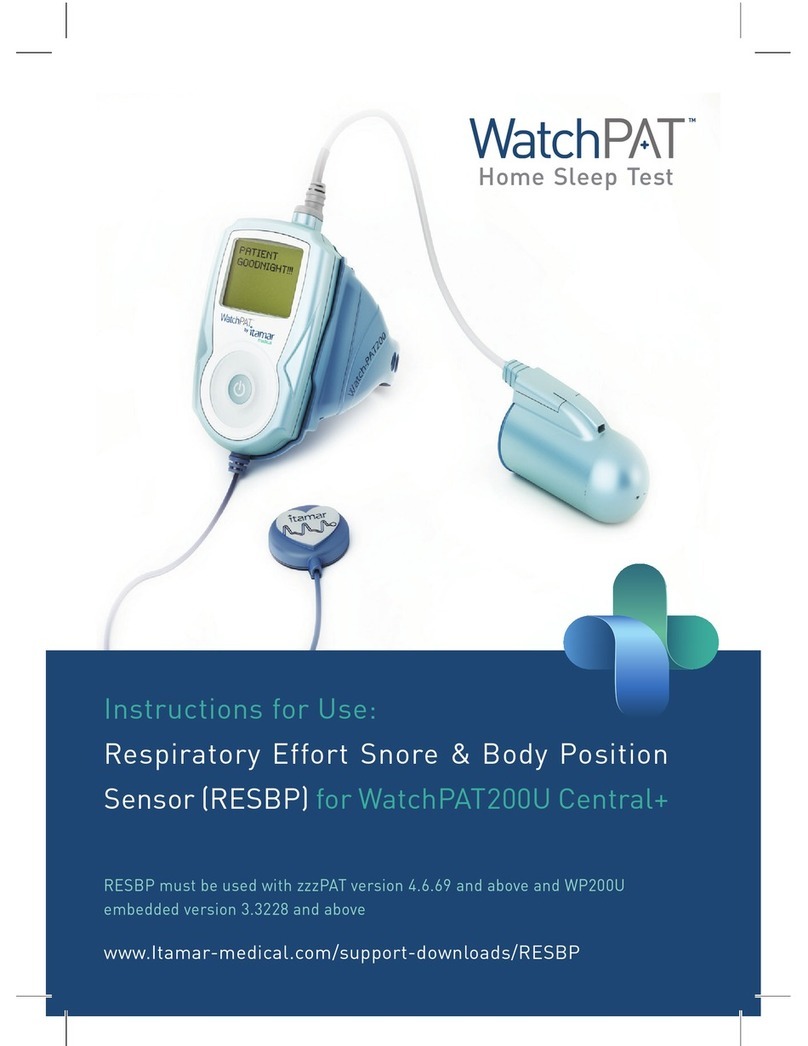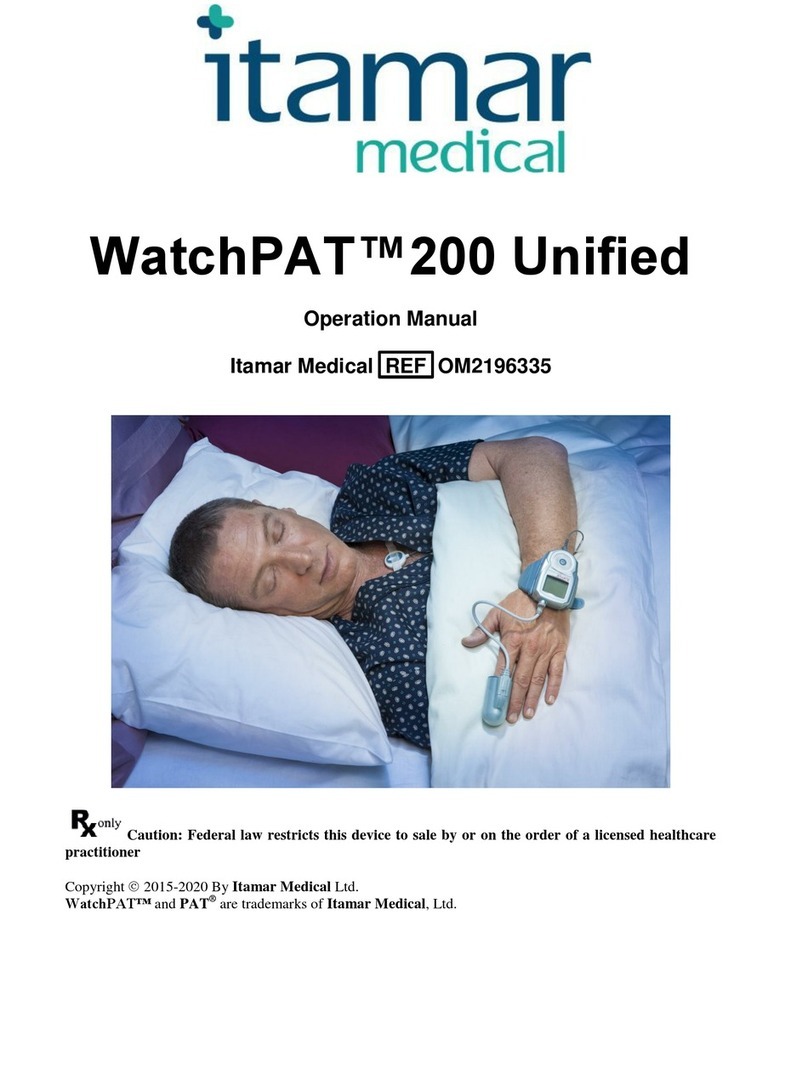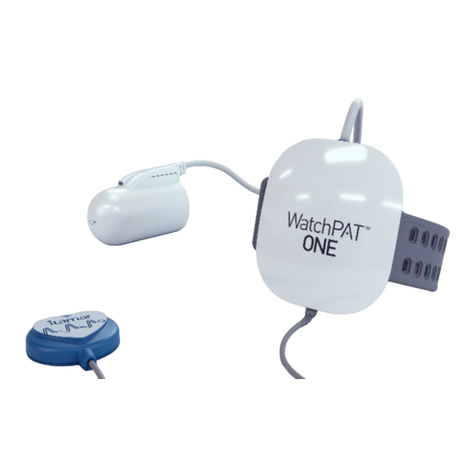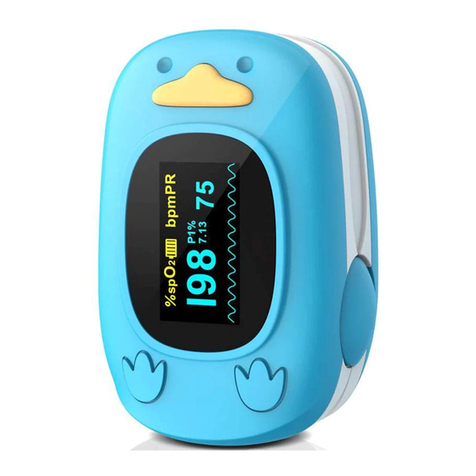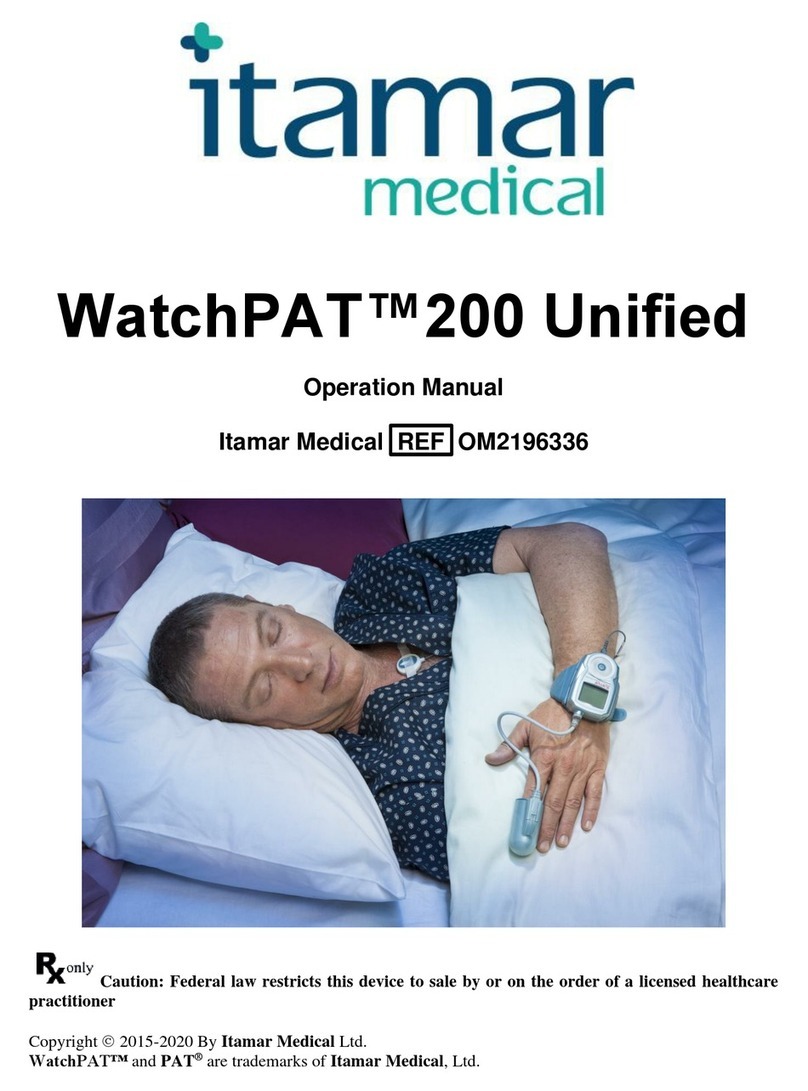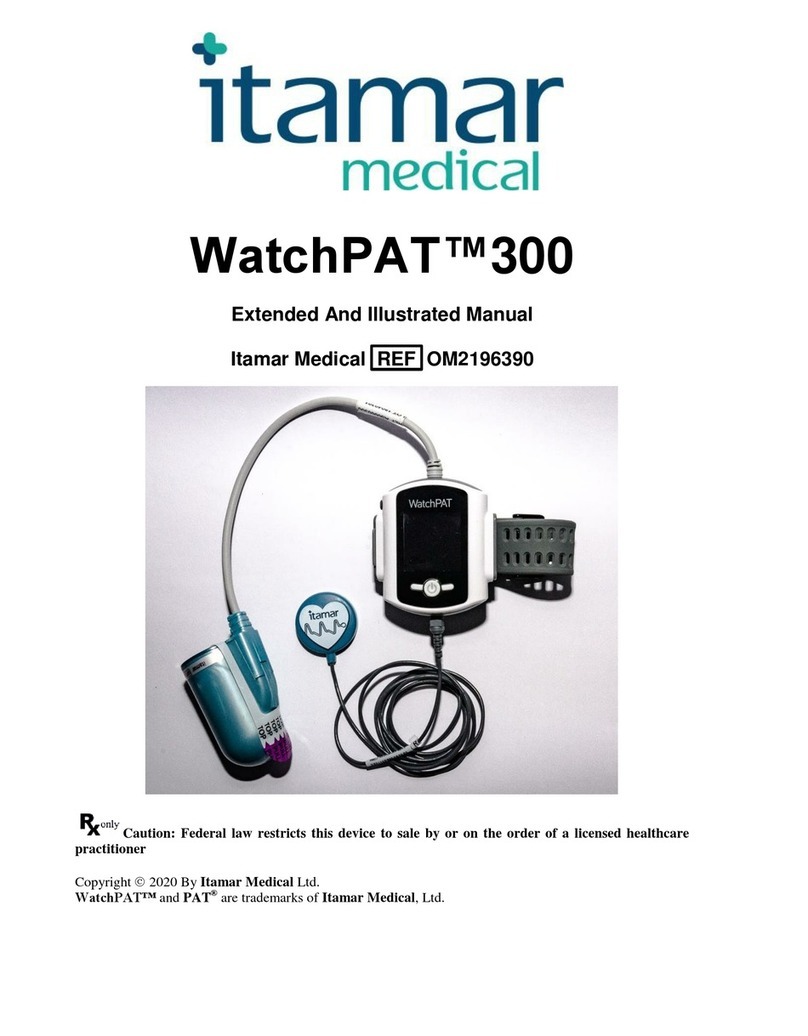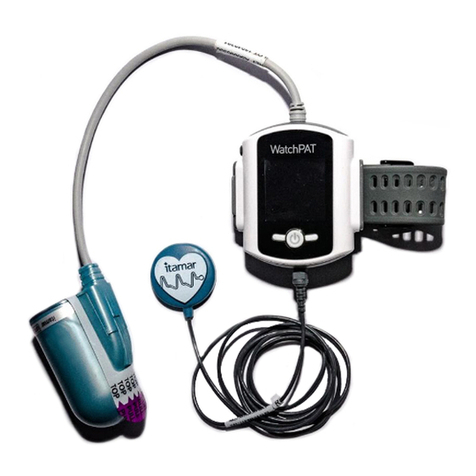WatchPAT®ONE System 1 Operation Manual
1 GENERAL INFORMATION
This manual is part of the WatchPAT®ONE (hereafter called WatchPAT) system.
1.1 Intended Use / Indications for Use
The WatchPAT device is a non-invasive home care device for use with patients
suspected to have sleep related breathing disorders. The WatchPAT is a diagnostic
aid for the detection of sleep related breathing disorders, sleep staging (Rapid Eye
Movement (REM) Sleep, Light Sleep, Deep Sleep and Wake), snoring level and
body position. The WatchPAT generates a peripheral arterial tonometry ("PAT")
Respiratory Disturbance Index ("PRDI"), Apnea-Hypopnea index ("PAHI"), Central
Apnea-Hypopnea index ("PAHIc"), PAT sleep staging identification (PSTAGES)
and optional snoring level and body position discrete states from an external
integrated snoring and body position sensor. The WatchPAT's PSTAGES and
snoring level and body position provide supplemental information to its
PRDI/PAHI/PAHIc. The WatchPAT's PSTAGES and snoring level and body
position are not intended to be used as the sole or primary basis for diagnosing any
sleep related breathing disorder, prescribing treatment, or determining whether
additional diagnostic assessment is warranted.
PAHIc is indicated for use in patients 17 years and older. All other parameters are
indicated for 12 years and older.
1.2 Restrictions for Use
1. The WatchPAT should be used only in accordance with physician’s instructions. For
exclusion criteria see Section 1.3.
2. Only qualified medical personnel may authorize the use of the WatchPAT.
3. Qualified medical personnel must instruct the patients (and accompanying individual
if needed) how to attach and use the WatchPAT prior to use.
4. In the event of equipment malfunction all repairs should be executed by authorized
Itamar Medical Ltd. personnel or licensed service agents.
5. The eligibility of a patient for a PAT® study is entirely at the discretion of a physician
and is generally based upon the patient’s medical status.
6. The WatchPAT system in whole, or in part, may not be modified in any way.
7. The WatchPAT is used as an aid for diagnostic purposes only and should not be used
for monitoring.
8. The tracings and calculations provided by the WatchPAT system are intended as tools
for the competent diagnostician. They are explicitly not to be regarded as a sole
incontrovertible basis for clinical diagnosis.
9. In the event that the system does not operate properly, or if it fails to respond to the
controls in the manner described in this Manual, you should refer to the
Troubleshooting Guide section. If necessary, contact our service office to report the
incident, and to receive further instructions.
